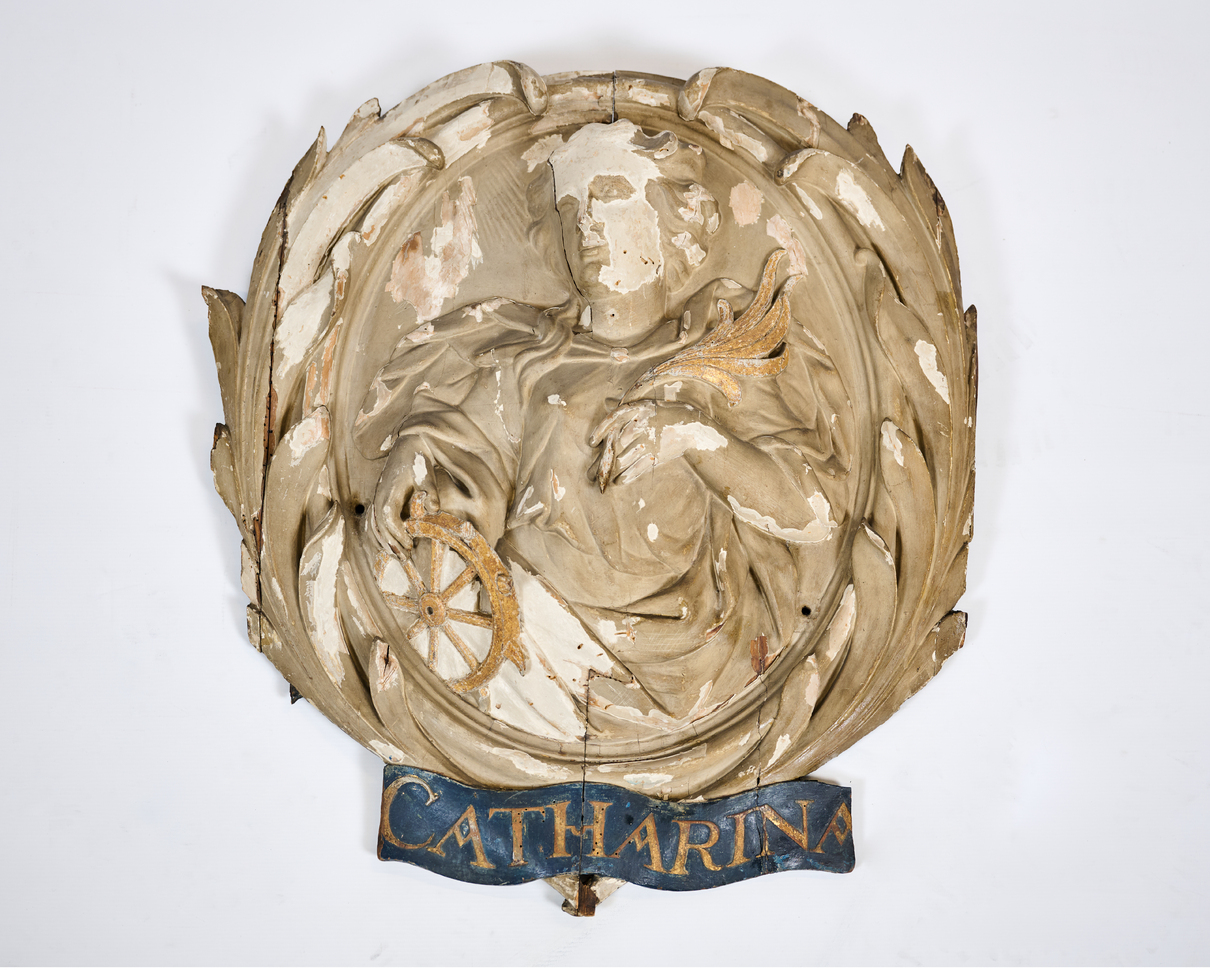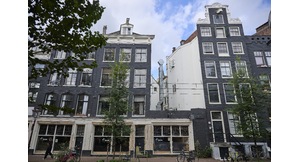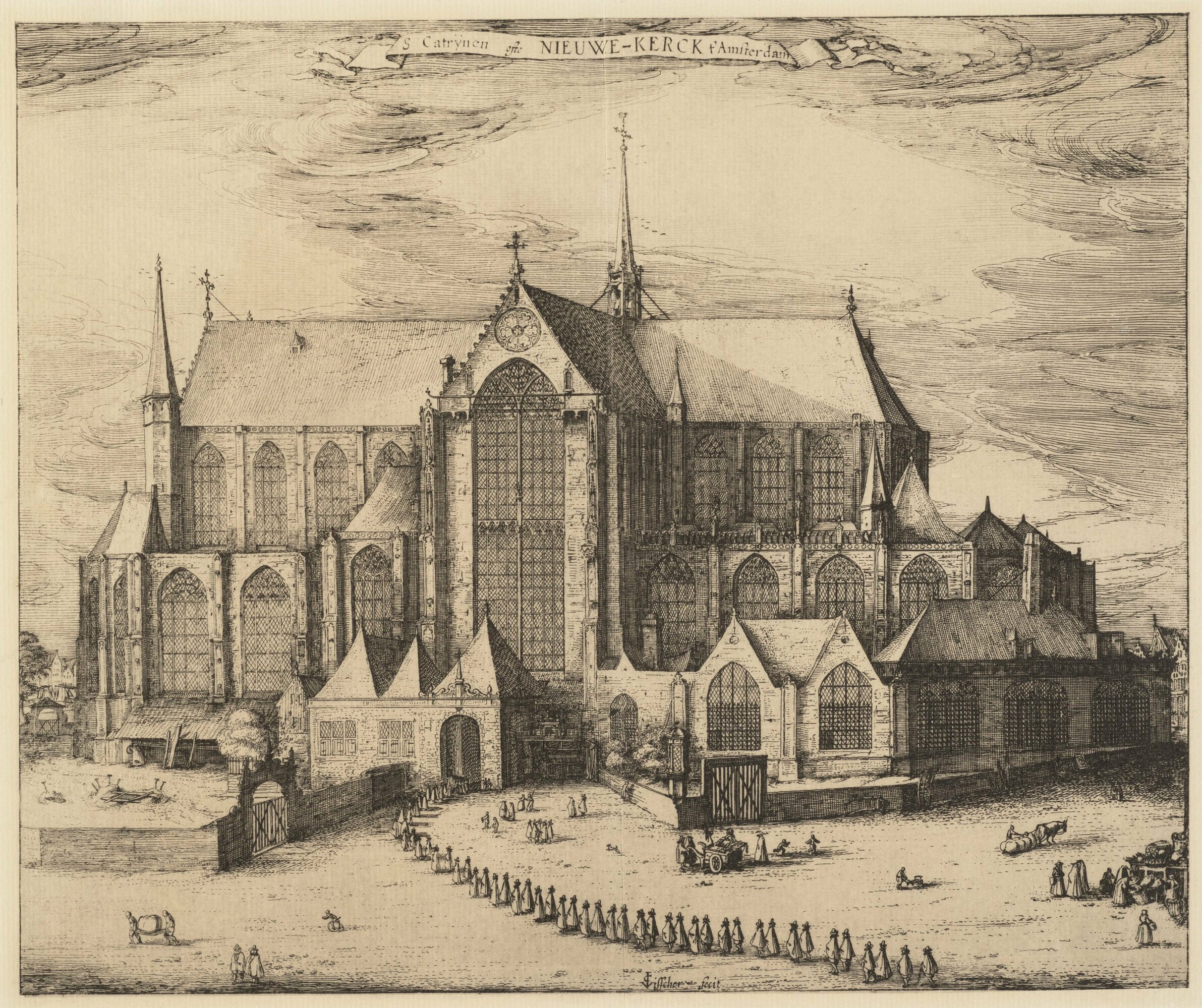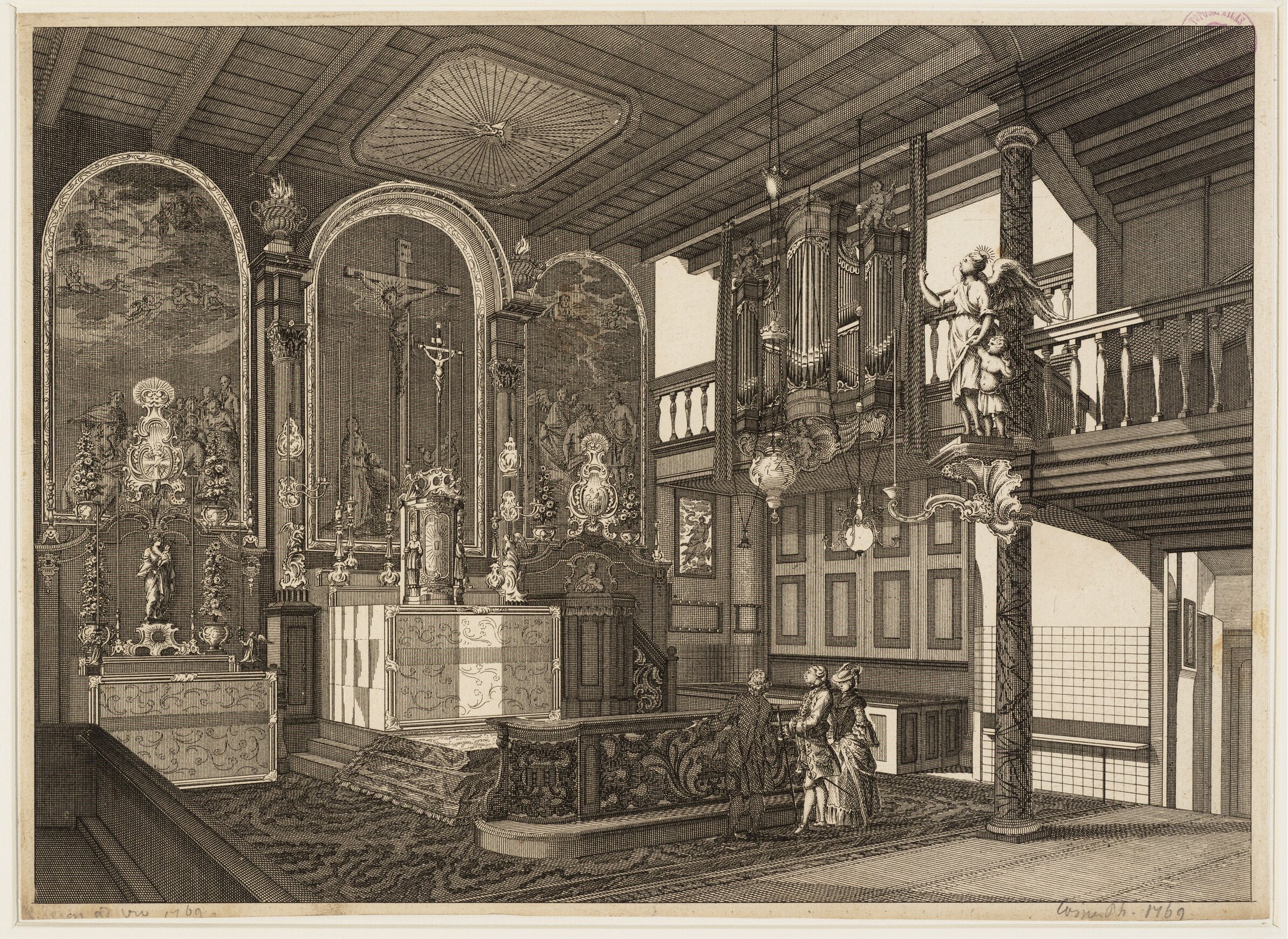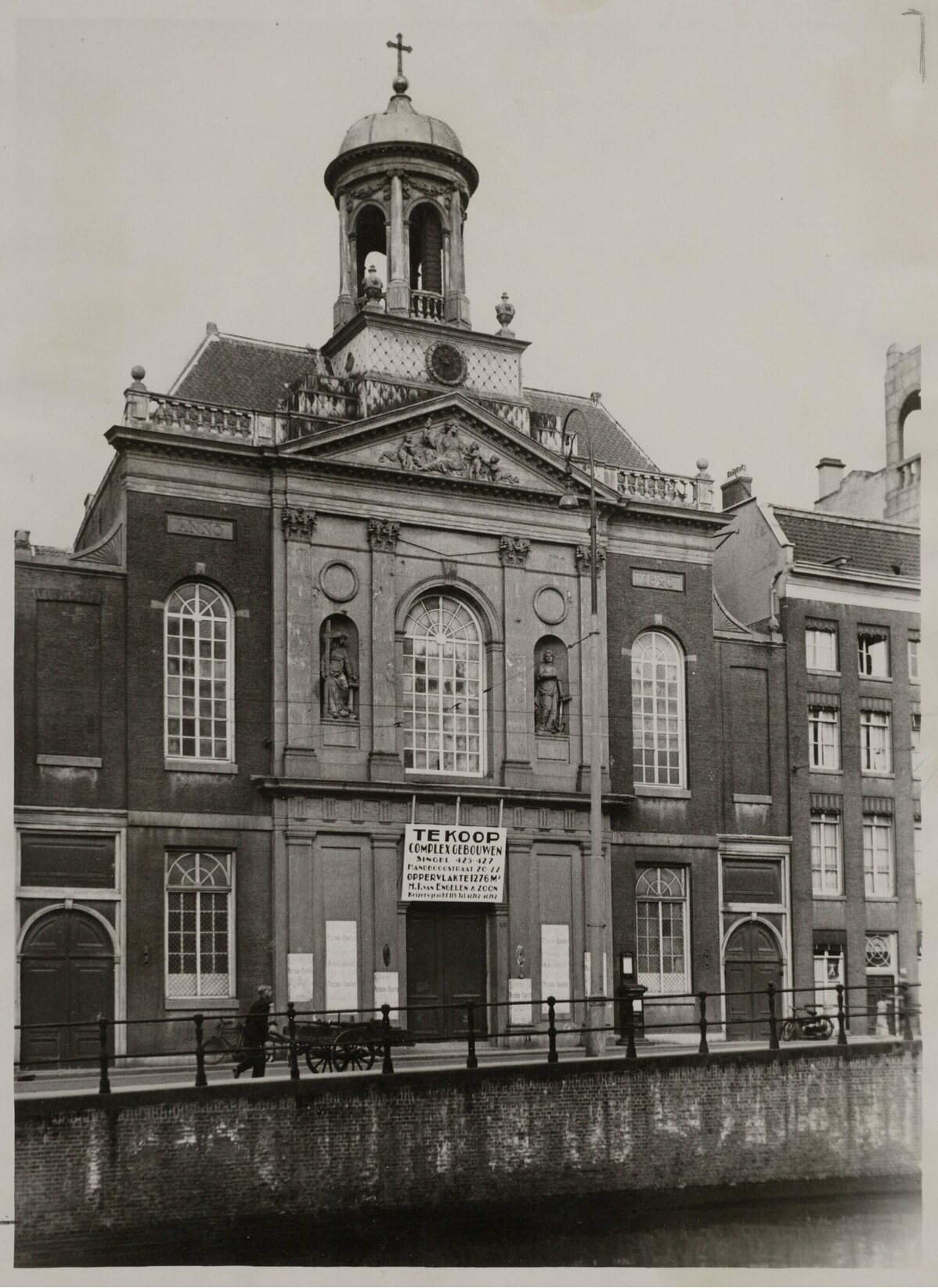Once, she was one of Amsterdam's most beloved saints. However, due to tensions between Catholics and Protestants, her future in the city was no longer secure.
Location
Geloof Hoop en Liefde
Type
Clandestine church
Religious community
Roman Catholic Church
Description
Relief depicting St. Catherine of Alexandria in a weathered state
Maker and date
Maker unknown
ca. 1700
Visit
Not on display
The Patron Saint of the Nieuwezijde
Behind this weathered face is the story of one of Amsterdam's most popular saints. She represents St. Catherine of Alexandria. St. Catherine is an important martyr and saint in the Catholic Church. She lived around the year 300 in the Egyptian city of Alexandria. There, during a persecution of Christians, she was tortured on a pointy wheel and finally beheaded. In her right hand she holds the wheel and in her left a palm branch, the symbol of martyrdom. The medallion is surrounded by palm leaves.
Before the Alteratie, the Nieuwe Kerk was a Catholic church where relics of St. Catherine were kept. The Nieuwe Kerk and the entire Nieuwezijde were therefore dedicated to her. An old name for the Nieuwe Kerk is St. Catherine's Church.
Alteratie
In 1578, the Catholic city government of Amsterdam was deposed. A Protestant city council took its place. The consequence of this change (Alteratie in Dutch) was that, from that moment on, the Reformed Church became the only church that was allowed to manifest itself publicly. Catholic churches and monasteries were confiscated and given new functions.
Relic
Venerable remains of the body of a saint. Also objects used by a saint or objects brought into contact with the body of a saint. By venerating relics, the believer venerates the saint and therefore God himself.
Saint
A person who has lived an exceptionally holy or virtuous life and is believed to be in heaven.
Martyr
Someone who has been killed because of their faith.
After the Alteratie, the Nieuwe Kerk came into Protestant hands. With this, the public worship of saints and relics was stopped. The thirty-four impressive altars, the wide variety of precious works of art and the relics of St. Catherine were removed from the church by its new users. Nevertheless, Catholics continued the veneration of St. Catherine in their hidden churches. The memory of St. Catherine lived on in the hidden church Geloof Hoop en Liefde, on Nieuwezijds Voorburgwal. This is the origin of this relief.
hidden church
Building in which hidden religious services were held in the Dutch Republic (1588-1795). Christian denominations outside the Calvinist church, such as Catholics, Lutherans, Mennonites and Remonstrants, had to practice their religions in hidden churches.
The community of this hidden church was able to build a new public church in 1817, which they named St. Catherine's Church. This marked a visible return of St. Catherine in the city. Unfortunately, this revival was not long-lasting. Due to the outflow of residents from the inner city, many churches were abbandoned and had to close. St. Catherine's Church closed its doors in 1933 and was demolished in 1939. Around this time, the relief entered the collection of Museum Amstelkring, which was the forerunner of the current Our Lord in the Attic Musuem.
Pieter-Jan van Giersbergen
Collection Curator Our Lord in the Attic Museum
Last edited
November 08, 2024
St. Catherine, maker unknown, c. 1700, wood, Ø 65 cm. Collection Museum Ons' Lieve Heer op Solder. Photography Robert Westera.
Exterior: photography Robert Westera.
S. Catrijnen ofte Nieuwe-Kerck t'Amsterdam, Visscher, C. J., 1612, engraving. Collection City Archives Amsterdam.
Het interieur van de rooms-katholieke kerk Geloof, Hoop en Liefde op Nieuwezijds Voorburgwal 338, Jacobsz., P.C. and H. Keun, 1769, etching. Collection City Archives Amsterdam.
Sint Catharinakerk wordt te koop aangeboden, unknown photographer, 1934. Collection City Archives Amsterdam.
Loos, J.C. van der, Geschiedenis der voormalige S. Catharina-kerk te Amsterdam (Haarlem 1936).
Tepe, W., XXIV Paepsche Vergaderplaatsen: Schuilkerken in Amsterdam (Amstelveen 1984).
Wagenaar, J., Amsterdam in zijne opkomst, aanwas, geschiedenissen […] II (Amsterdam 1765).

